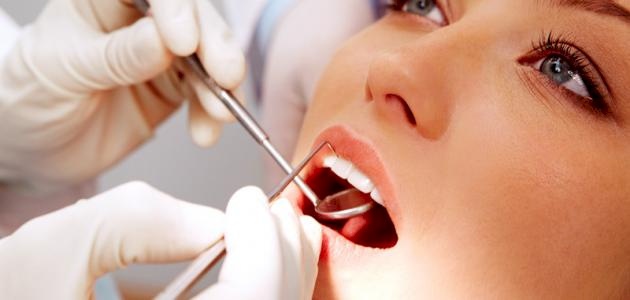
A Global Race for Human Tooth Implantation... From Scientific Dream to Signs of Reality
SadaNews - While visiting the dentist remains a source of anxiety for many, the pace of scientific research around the world is accelerating to achieve a long-awaited milestone: the implantation of real human teeth in the lab, which could revolutionize the field of regenerative dentistry, according to the "CNN" network.
Instead of relying on traditional metal implants that require complex surgery and inserting a titanium screw into the jawbone, followed by months of healing to form an artificial root, scientists today are seeking to reproduce natural teeth with their cells and tissues, so that they are implanted into the jaw and continue to grow like any natural biological tooth.
At the forefront of this scientific race is Professor Anna Angelova Volponi, director of the graduate program in regenerative dentistry at "King's College" in London, who has been working for nearly two decades on research into tooth development in the lab. She was part of a team that managed, in 2013, to grow a tooth using human and mouse cells, in an experiment that marked a turning point in this field.
This year, Volponi led a new study that built on her previous research; she developed a new scaffold material that accurately mimics the natural environment in which teeth grow inside the mouth. This development is a crucial step towards replacing mouse cells with human cells, bringing scientists closer to the dream of producing a complete human tooth in the lab.
Volponi clarifies that the concept of growing teeth is not new; it dates back to the 1980s. However, her research was the first to use human gingival cells taken from the oral epithelium and combined them with embryonic tooth cells from a mouse, beginning what she describes as a "cellular dialogue" that leads to the formation of a tooth within a suitable incubator environment.
This environment, scientifically known as "scaffold," was the focus of the latest experiment. While Volponi used a collagen scaffold in 2013, she has now turned to hydrogel, a type of water-rich polymer, thanks to her collaboration with a team from "Imperial College London."
PhD student Shuochen Chang, who is participating in the project, states that the cells are first extracted from mouse embryos and mixed within the hydrogel to form a small cell mass left to grow for about eight days. At the end of the period, structures resembling teeth form within the material, demonstrating that the new incubator environment can support the vital growth process.
Although the road is still long before applying this technique on humans, Volponi confirms that the new development has contributed to improving the "communication" among the cells responsible for tooth formation; enhancing the chances of achieving the final goal.
The British researcher envisions two potential scenarios for future application of the technique: either implanting the tooth in the jaw cavity so it continues to grow naturally until it becomes an organic part of the mouth, or completing its growth in the lab and then surgically implanting it after it matures completely. She says it is too early to determine which of the two approaches would be more suitable.
Biological Advantages
Experts believe that a living tooth implanted from the patient's own cells would be a qualitative leap; as the body can accept it without inflammation or immune rejection, in addition to the natural sensation that is lacking in artificial crowns or metal implants.
Dr. Vitor Nives, a lecturer at the University of Sheffield's School of Dentistry, describes Volponi as "a pioneer in full tooth regeneration," confirming that her new research "addresses a pivotal factor in transforming the technique into a wide-ranging clinical application, through the development of scaffolds capable of supporting the entire tooth growth."
Nives adds that every advancement in this field "brings us closer to the day when the replacement of real living teeth becomes a tangible therapeutic reality."
Global Competition
Efforts are not limited to Europe; in Japan, Professor Katsu Takahashi leads a research team at the "Kitano" hospital in Osaka to develop a treatment based on antibodies to stimulate tooth growth in those suffering from "congenital tooth absence." The treatment has already entered clinical trial phases, with expectations for its approval before the end of this decade.
Meanwhile, in the United States, Professor Pamela Yelick from Tufts University has managed to grow teeth resembling human teeth using human and pig cells within the bodies of pigs, which are known for their natural ability to replace their teeth. The project aims to stimulate human jaw cells to produce new teeth without the need for any animal cells in the future.
At the University of Washington, a team led by Professor Hannelore Rohland Becker is conducting research on stem cells taken from donated wisdom teeth, with the aim of mapping the "molecular blueprint" for human tooth formation and reproducing it entirely in the lab.
Becker states that "the progress in this field is accelerating at an unprecedented pace," expecting that we will witness the transformation of living tooth implants from a scientific idea to a clinical reality in the next decade.

Predictions for a Decline in Global Smartphone Shipments in 2026

US Congress Launches Investigation into the Use of Ticks as Biological Weapons

Russia Develops Fuel That Provides Energy for a Thousand Years

10 Daily Habits that Waste Time and Energy

7 Exercises to Strengthen Your Calf Muscles

Creative Commons Organization Supports "Pay-Per-Crawl" Systems to Compensate Content in th...

Tea and Cocoa Reduce Health Issues Caused by Sitting for Long Hours

